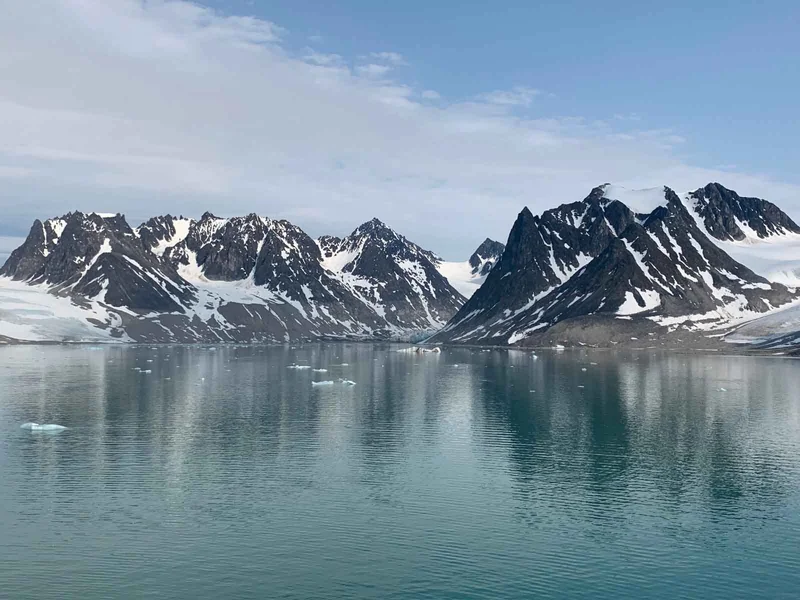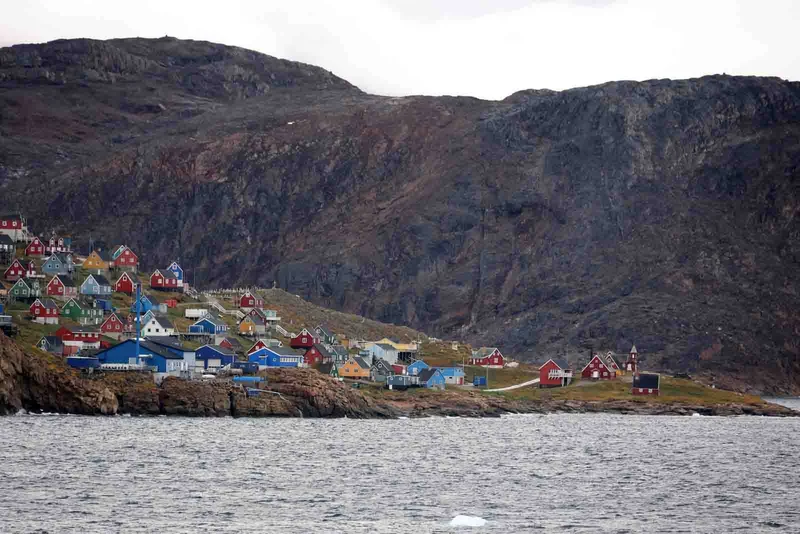
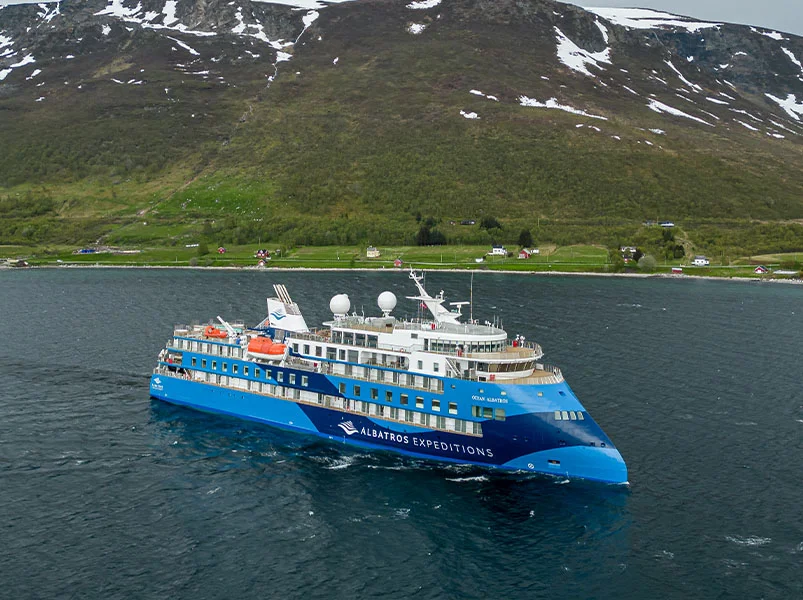
This bucket list expedition cruise takes you to the remote and pristine Arctic archipelago of Svalbard. You will see whales, walruses, polar bears, and millions of seabirds, and get up close to the wildlife in Zodiac boats. You will also visit extraordinary locations like Edgeøya and Bellsund. This is an unforgettable adventure that will allow you to experience the beauty and wildlife of the Arctic.
10 Day Artic Itinerary
Day 1: Longyearbyen
Arrival in Longyearbyen - the capital of Svalbard, possibly the most northern'real town' on earth.
Ocean Albatros docks close to town. The Expedition Leader, after boarding and enjoying the welcome drink will give information on the cruise. He'll also explain the daily schedule of the ship and various safety and security procedures. There will be an obligatory safety drill before sailing. Your Arctic Adventure begins when the Captain leaves Advent Fjord.
Day 2: NY Alesund, NY London, & Lilliehook Glacier
The wildlife, scenery and history of the Svalbard coast in the northwest are always worth a visit. Since the 1600s, this part of Svalbard has been a major center for whale hunting, with "Blubber Town", the primary target being oil-rich Bowhead Whales, which are the Arctic's sole resident baleen species.
New Alesund, the "town", is located on King's Bay (Kongsfjorden) and it's well worth visiting. This is the northernmost permanent civil settlement on earth. It has a population in summer of around 120 people and an even more hardy population during the winter of 35. It was originally the coal-mining town of King's Bay and played an important role in arctic exploration and exploitation, particularly flight.
It is now the centre of Arctic research and one of the world's most northern communities. Send a postcard to the most northern Post Office in the World.
Day 3: Smeerenburg & Ytre Norskoya
The wildlife, scenery and history of the Svalbard coast in the northwest are always worth a visit. Since the 1600s, this part of Svalbard has been a major center for whale hunting, with "Blubber Town", the primary target being oil-rich Bowhead Whales, which are the Arctic's sole resident baleen species.
New Alesund, the "town", is located on King's Bay (Kongsfjorden) and it's well worth visiting. This is the northernmost permanent civil settlement on earth. It has a population in summer of around 120 people and an even more hardy population during the winter of 35. It was originally the coal-mining town of King's Bay and played an important role in arctic exploration, particularly flight.
It is now the centre of Arctic research and one of the world's most northern communities. Send a postcard to the most northern Post Office in the World.
Day 4: Monaco Glacier
The wildlife, scenery and history of the Svalbard coast in the northwest are always worth a visit. Since the 1600s, this part of Svalbard has been a major center for whale hunting, with "Blubber Town", the primary target being oil-rich Bowhead Whales, which are the Arctic's sole resident baleen species.
New Alesund, the "town", is located on King's Bay (Kongsfjorden) and it's well worth visiting. This is the northernmost permanent civil settlement on earth. It has a population in summer of around 120 people and an even more hardy population during the winter of 35. It was originally the coal-mining town of King's Bay and played an important role in the exploration of the arctic, particularly flight.
It is now the centre of Arctic research and one of the world's most northern communities. Send a postcard to the most northern Post Office in the World.
Day 5: Alkefjellet & Torrelnesset
You're in high arctic if you venture north or east. The north and east of Svalbard are the areas that receive the least amount of visitors. This is because they're closed to exploring for part of the year due to dense pack ice.
The terrain here is a "polar desert", where permanent ice covers much of the area. Where it melts, there's very little greenery on the landscape, which has been carved by the ice for millions of years.
This part of Svalbard, despite its lack of protection, is worth exploring, because it is home to a variety of wildlife. Here, Arctic geese and ducks nest and the largest concentration of walruses in the Arctic gathers on the coast. Also, ringed and minke whales as well as polar bears can be seen.
Sjuoyane is the group of islands that are located at Svalbard's most northern point. They have always been a great place to see Polar Bears.
Later in the year, ships will often travel up the North coast of Spitsbergen to reach the edge of the pack ice.
Day 6: Hinlopen Strait, Freemansundet & Edgeoya
Hinlopen Strait, or "Hinlopenstretet", is the narrow channel that connects Spitsbergen to Nordaustlandet on Svalbard. It can be accessed by Freemansundet. The channel, which is only six miles wide at times, is frequently covered with pack ice. It is difficult to navigate during the first part of the winter season.
Longer Svalbard voyages may explore the middle and southern sections of Hinlopenstretet before returning around to the southern end. The strait is a popular destination for many expedition leaders who want to see the two highlights of Svalbard.
Both the ice cliffs of Brasvellbreen, and bird cliffs at Alkefjellet. The BBC Frozen planet series featured both in its opening credits. Once it is cleared, cruise ships will be able to navigate Spitsbergen as well as the adjacent island of Nordaustlandet. It is part of Svalbard Nature Reserve and uninhabited. It's an incredibly beautiful, heavily glaciated landscape with permanent winter ice in some areas.
Reindeer herds roam the classic tundra of arctic regions that melt. Walrus also use the shores of Nordaustlandet, north-east Spitsbergen and other areas. It is a great experience to see them on beaches.
Day 7: Hornsund
Spitsbergen, the largest island of the Svalbard Peninsula and only permanent resident inhabitant is located on the peninsula.
Spitsbergen's southwestern region benefits from the Gulf Stream, which brings warmer water into the Greenland Sea. The shores and water here are ice free for most of the year, except during the coldest months. Hornsund, the southernmost fjord in Norway, is the area where 'fast-ice' (seaice that sticks to land) tends to last the longest.
Spitsbergen has a more temperate climate in the Arctic than other areas at the same latitude. It also benefits from the "midnight Sun" of the arctic, when the sun does not set between April 20th and August 22nd.
Spitsbergen's combination of long daylight and warmer temperatures makes it a paradise for birds. You can sail to the center of the island, surrounded by glaciers and enjoy stunning views and geology. Landings are often done in Bellsund and combined with ship cruises, Zodiacs, and landings on Hornsund. This area has some spectacular glacial views.
Day 8: Bellsund, Varsolbukta & Calypsobyen
Spitsbergen, the largest island of the Svalbard Peninsula and only permanent resident inhabitant is located on the peninsula.
Spitsbergen's southwestern region benefits from the Gulf Stream, which brings warmer water into the Greenland Sea. The shores and water here are ice free for most of the year, except during the coldest months. Hornsund, the southernmost fjord in Norway, is the area where 'fast-ice' (seaice that sticks to land) tends to last the longest.
Spitsbergen has a more temperate climate in the Arctic than other areas at the same latitude. It also benefits from the "midnight Sun" of the Arctic, when the sun does not set between April 20th and August 22nd.
Spitsbergen's combination of long daylight and warmer temperatures makes it a paradise for birds. You can sail to the center of the island, surrounded by glaciers and enjoy stunning views and geology. Landings are often done in Bellsund and combined with ship cruises, Zodiacs, and landings on Hornsund. This area has some spectacular glacial views.
Day 9: Poolepynten & Isfjorden
Isfjorden, at 66 mile long, is the second largest fjord on Svalbard. Spitsbergen's largest settlements have developed along the shore of Isfjorden, which has been an important shelter and anchorage since the beginning of human existence. Longyearbyen is the largest, which was originally a mining settlement and now serves as the main transport hub to and from Svalbard. The Russian mining town Barentsburg is also a large town.
This fjord has another key characteristic: it rarely ices over, due to the Gulf Stream's warm current that enters the fjord through the west. It is not just attractive for humans, but it's also great for wildlife who can't survive under the fast ice.
Zodiac tours over calm water, landings for exploring tundra, or the opportunity to see some stunning bird cliffs are all highlights. Remember that cruise ships often spend less time at the fjord. They may sail out on their first night and only explore the area and land the following day.
It is therefore highly recommended that those who have extra time to spare in Longyearbyen spend it exploring the surrounding area, taking part in activities such as dog sledding, or visiting other areas of the Isfjorden Fjord System, including day trips and camping. The abandoned Russian mining town Pyramiden is a must-see if you didn't get to see it during the cruise. Many people chose to skip this stop. The former largest settlement of Svalbard, it has the northernmost bust in the world and feels as if it should be in Siberia.
Day 10: Longyearbyen
The ship returned early in the morning to its starting point at Longyearbyen. Disembarkation takes place after breakfast, and the crew and expedition team are wished farewell. The transfer to the airport is organized.
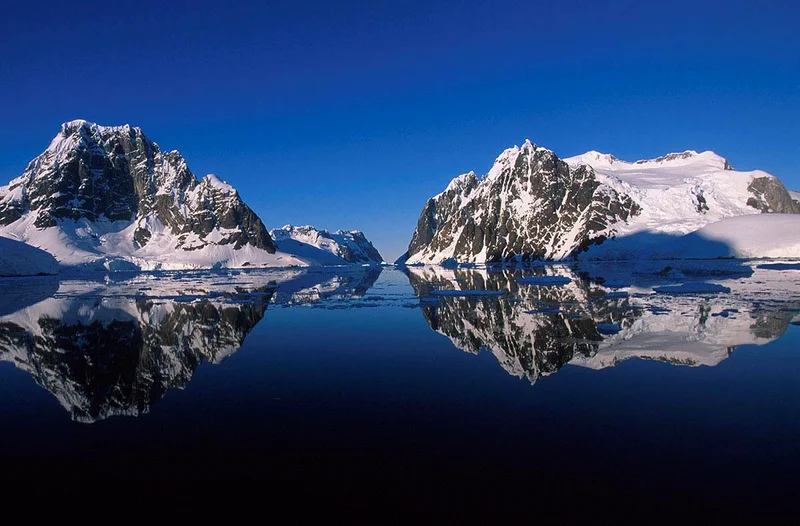
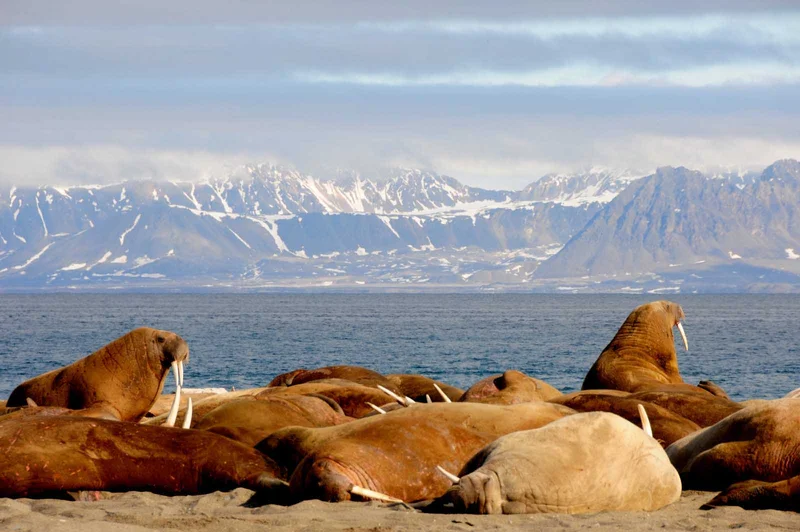
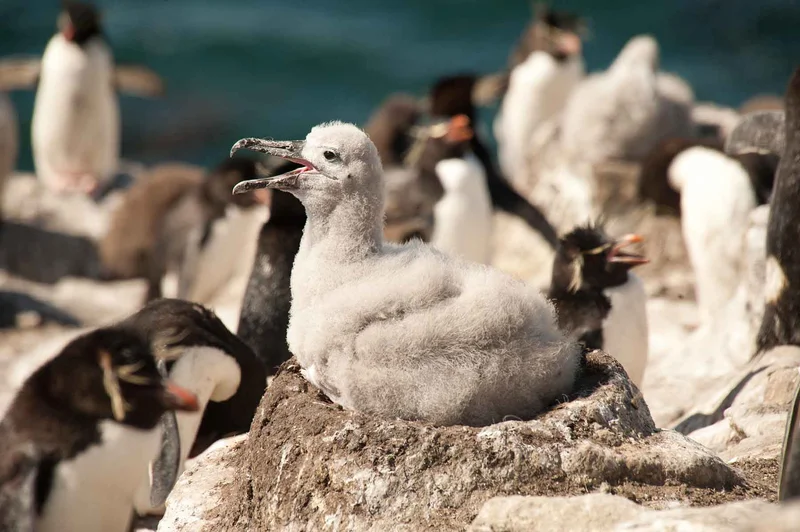
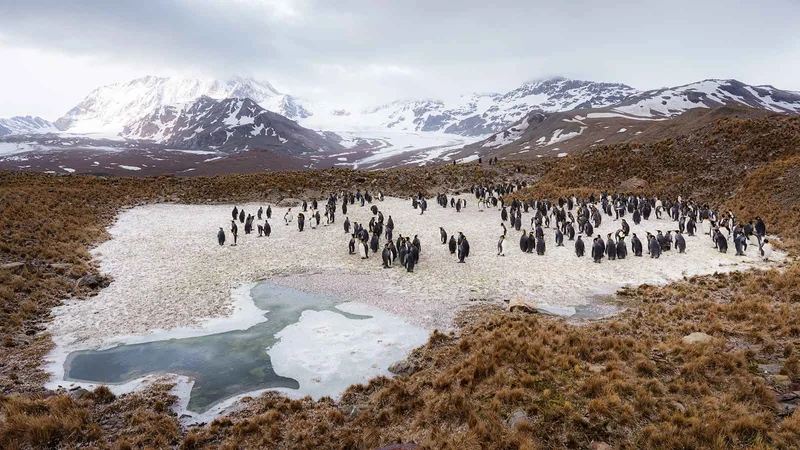
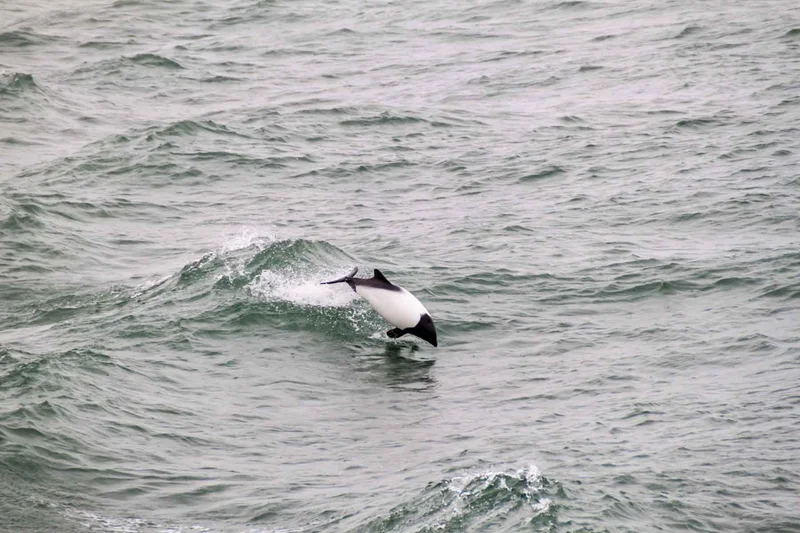
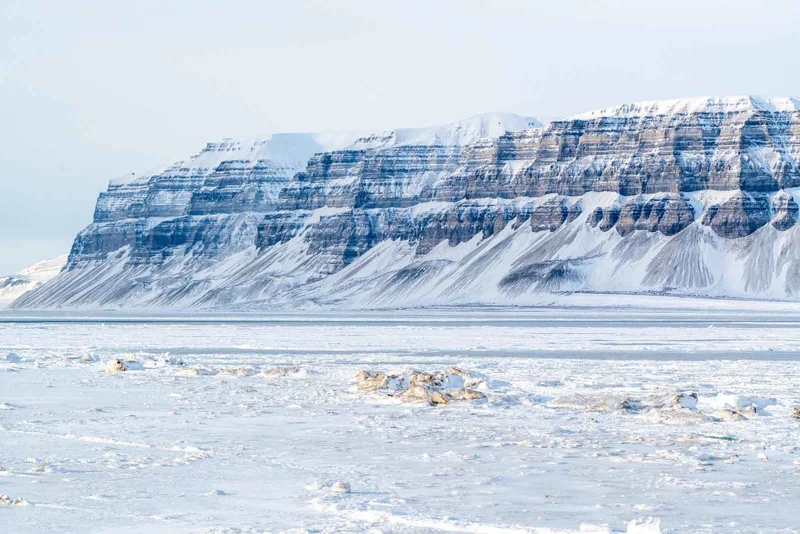
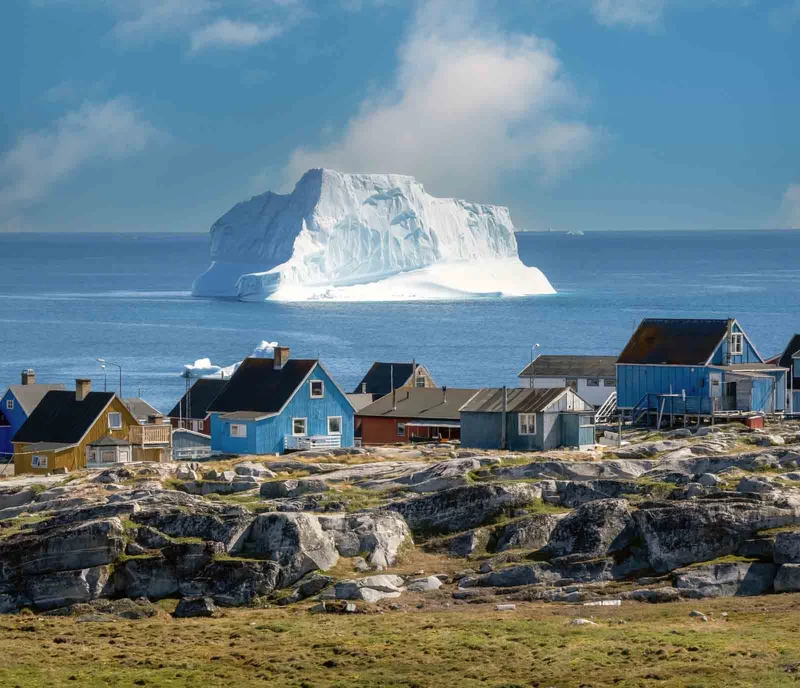
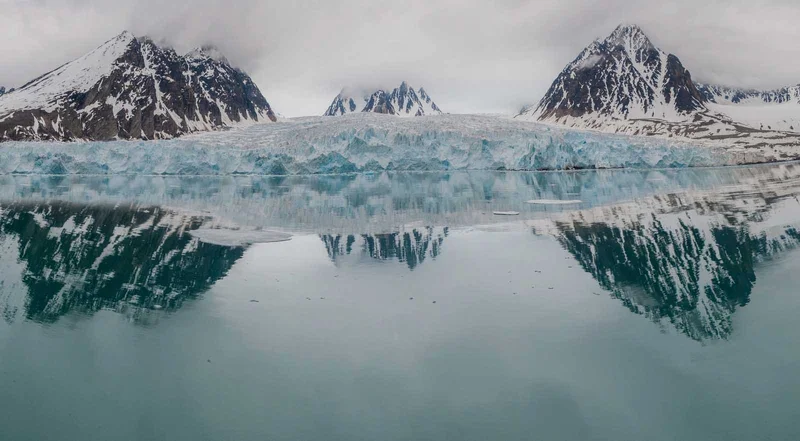
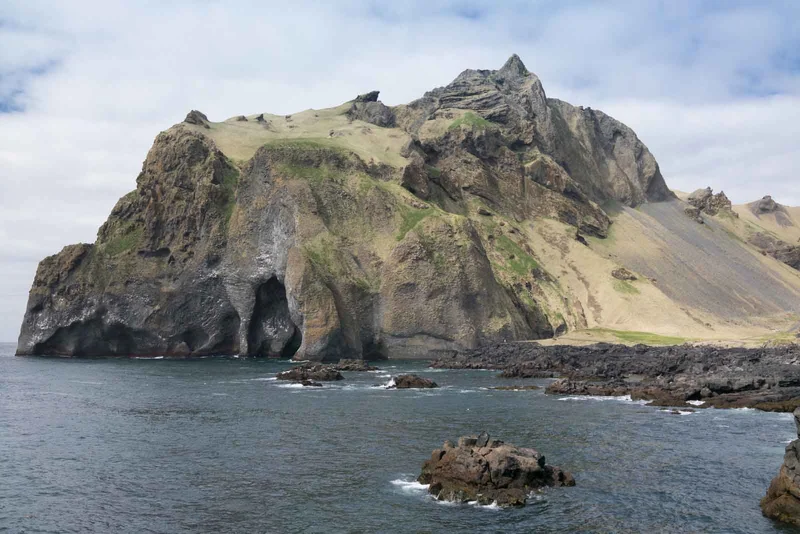
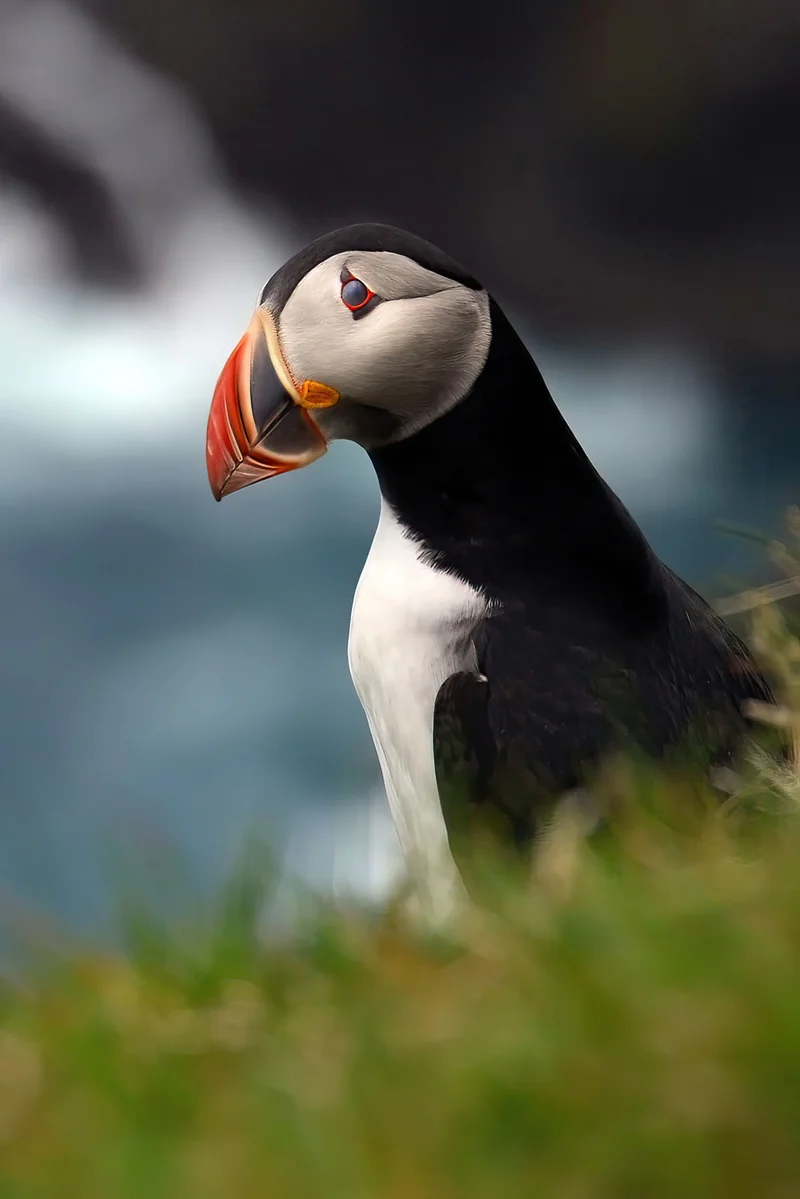
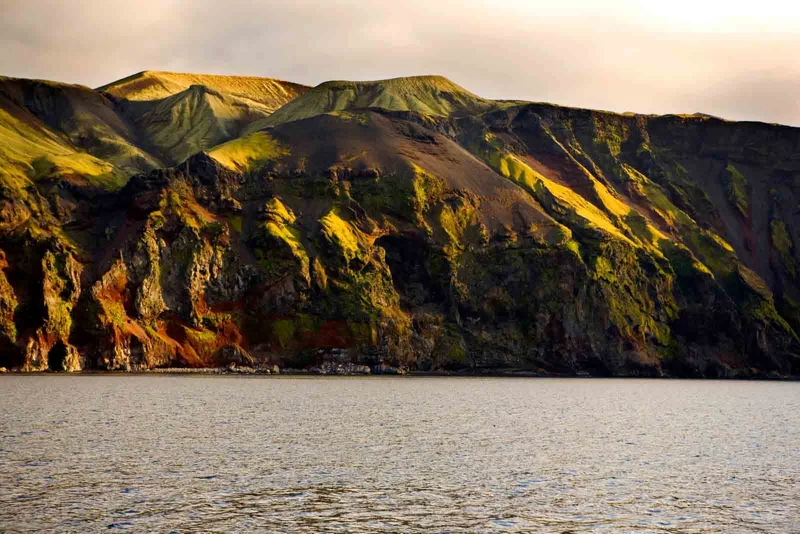
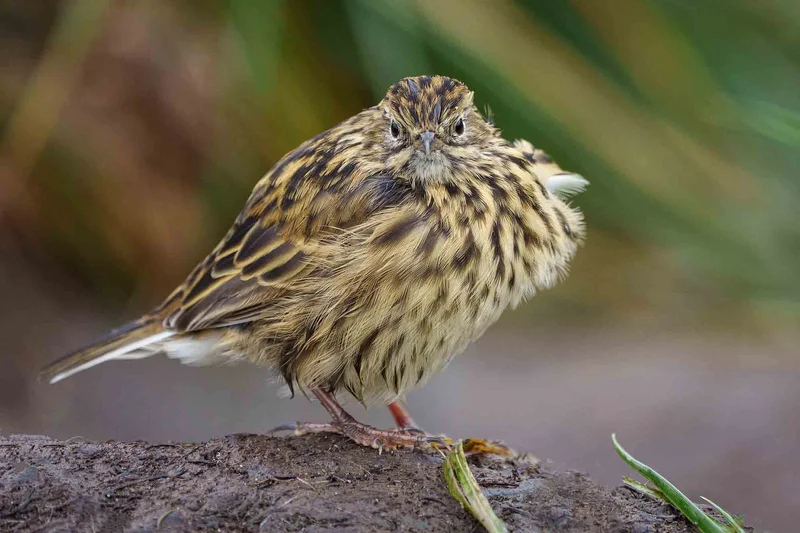
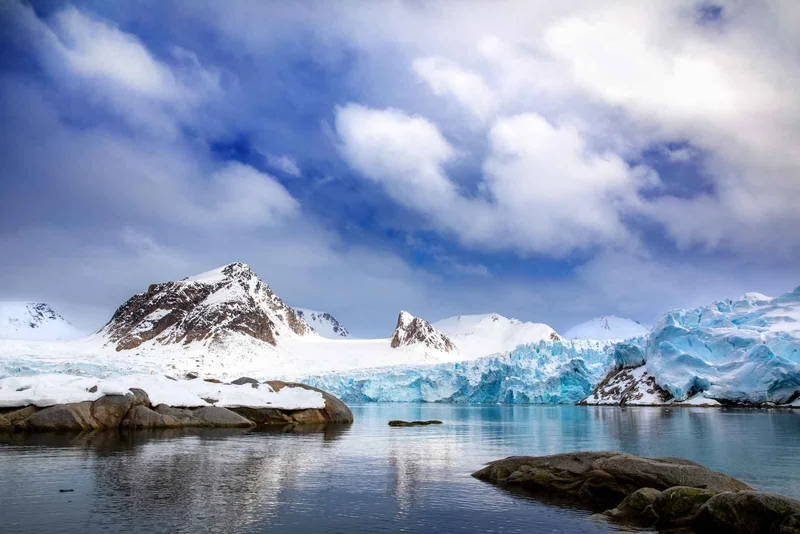
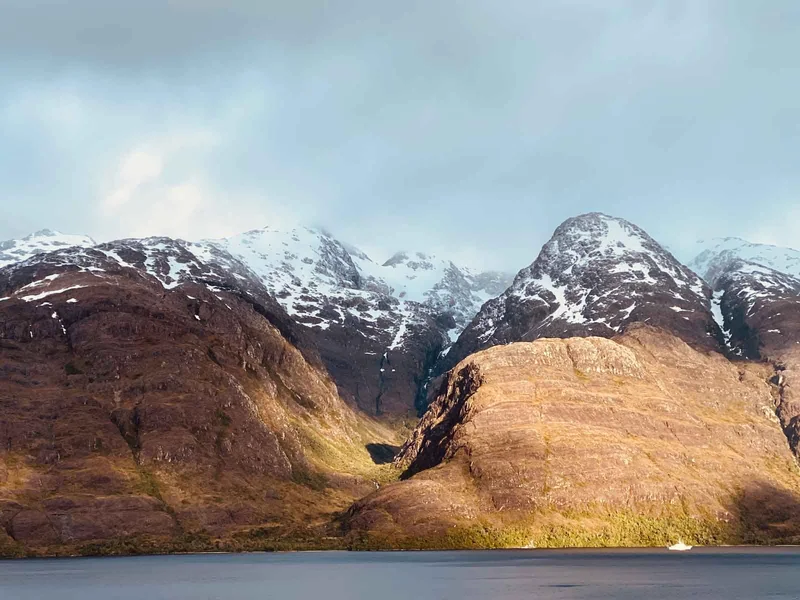
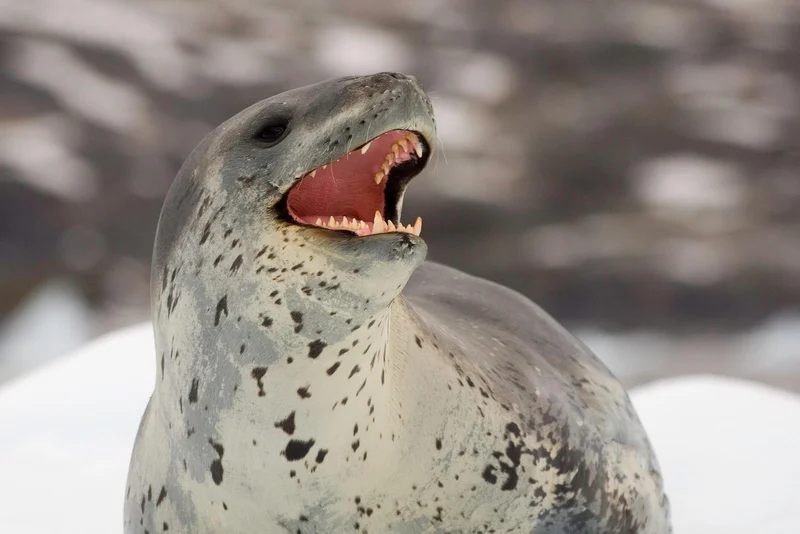
10 Day Artic Itinerary Includes
- Embarkation shuttle transfer to the vessel from Ushuaia city centre
- Shuttle transfer after disembarkation from the ship to Ushuaia city centre or airport
- All Zodiac landings and excursions, as per itinerary, guided by our Expedition Team
- Expedition parka
- Rubber boots loan scheme
- Briefings and lectures by our Expedition Leader and Team
- English-speaking Expedition Team
- Full board on the ship - breakfast, lunch, dinner and snacks
- Complimentary house wine, beer and soda at dinner (selected labels and brands, served at our a-la-carte dinners)
- Free tea and coffee available 24 hours
- Taxes and landing fees
- Special photo workshops
- Welcome and Farewell Cocktail Parties
10 Day Artic Itinerary Does not Include
- Extra excursions and activities not mentioned in the itinerary
- Single room supplement and stateroom upgrades
- Meals not on board the ship
- Beverages (other than coffee and tea)
- Tips for the crew (we recommend USD 14 per person per day)
- Personal expenses (e.g. Albatros Polar Spa services, Albatros Ocean Boutique purchases)
10 Day Artic Itinerary Highlights
- Circumnavigating Svalbard, a remote and pristine Arctic archipelago
- Seeing whales, walruses, polar bears, and millions of seabirds
- Getting up close to the wildlife in Zodiac boats
- Exploring the fjords and glacial landscapes of Svalbard
- Visiting extraordinary locations like Edgeøya and Bellsund
Itinerary Map
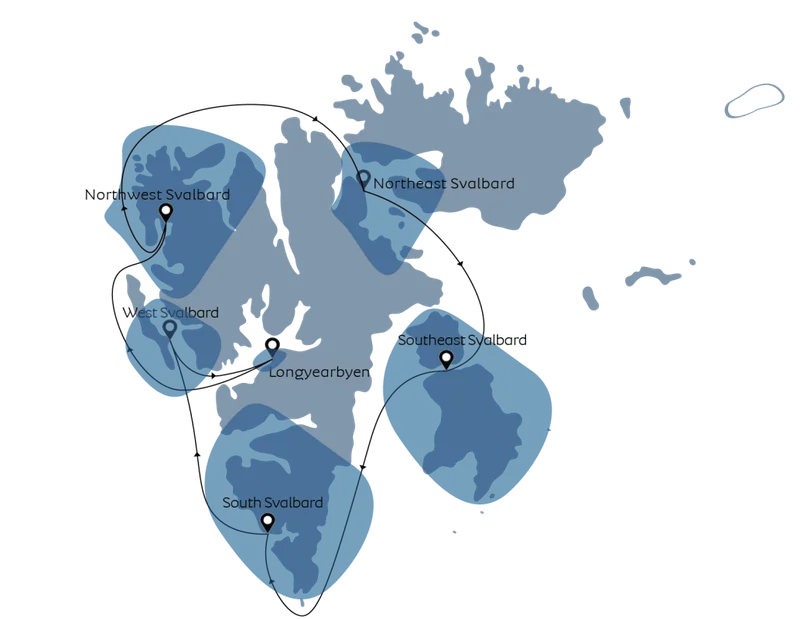
10 Day Arctic cruise activities
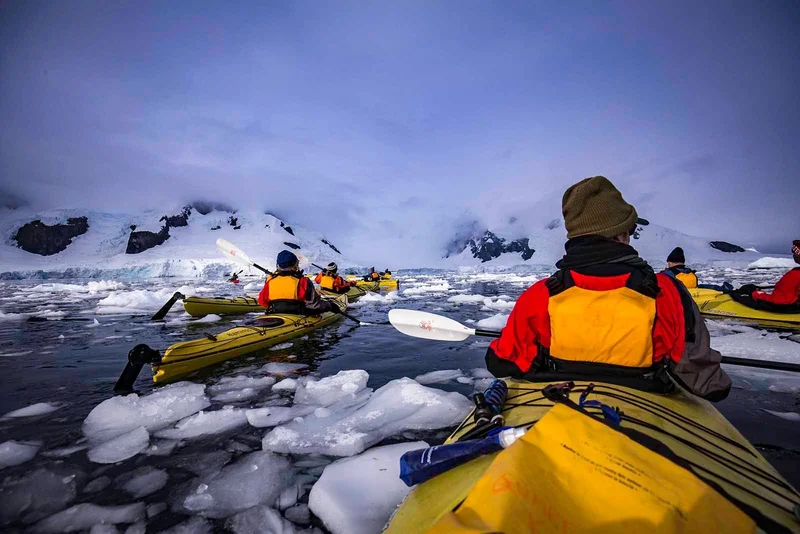
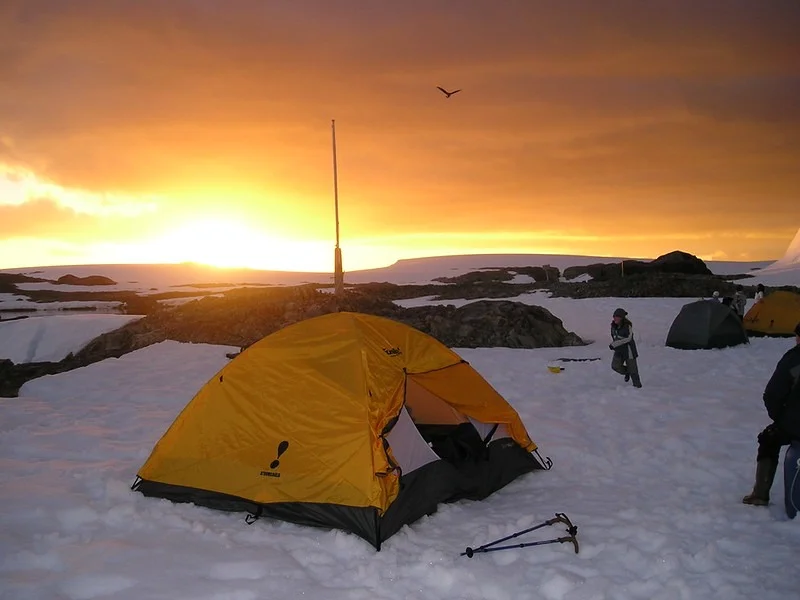
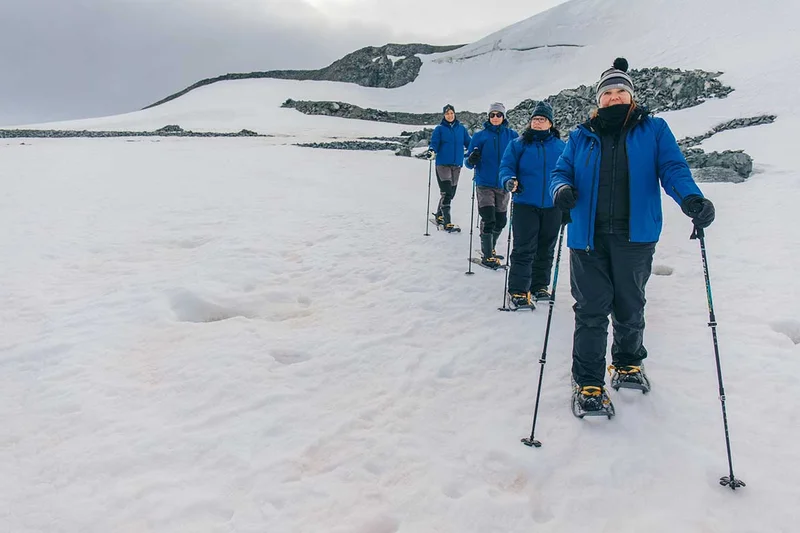
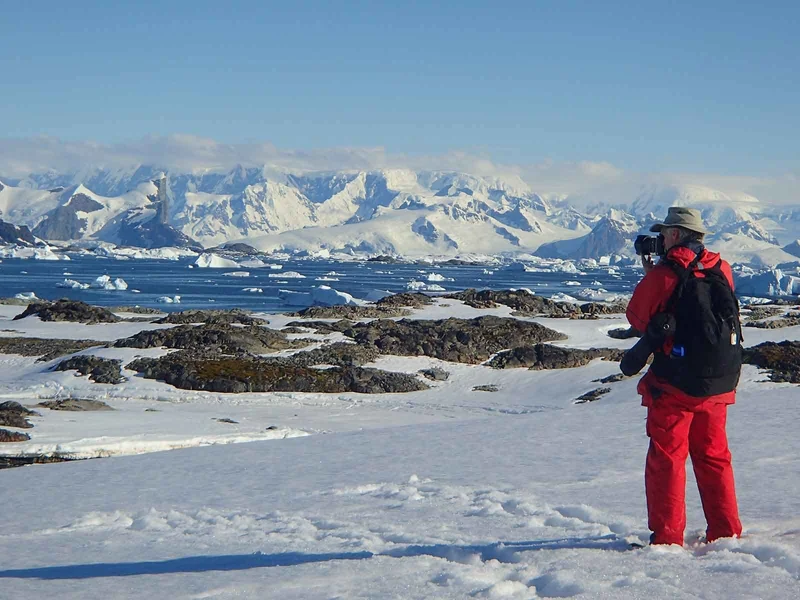
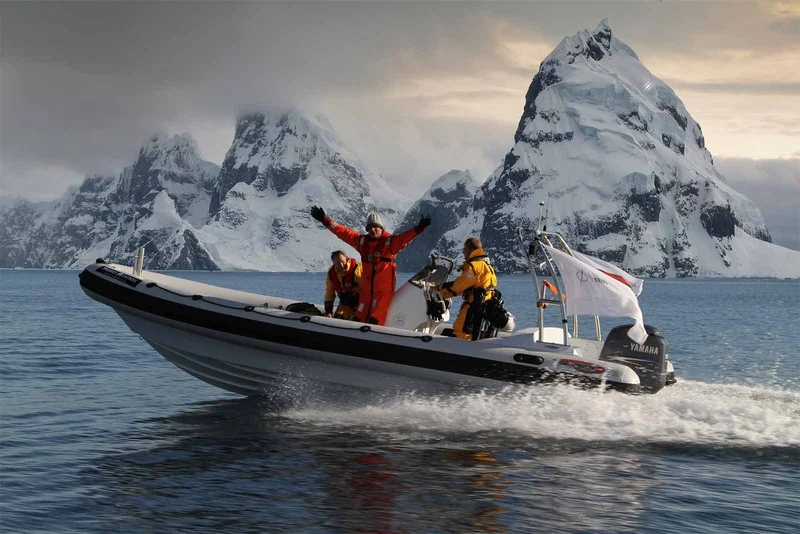

Animals you might see on this itinerary
Svalbard Circumnavigation
Why travel with us?
Would you like to know why booking with us is the best choice?
Discover the BenefitsSimilar Itineraries

